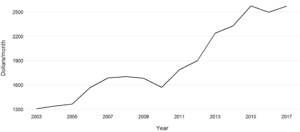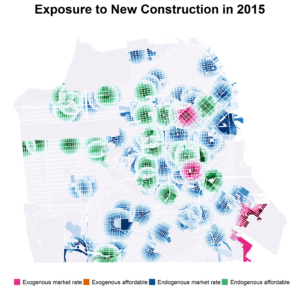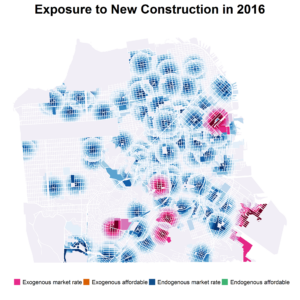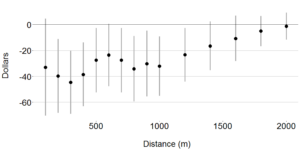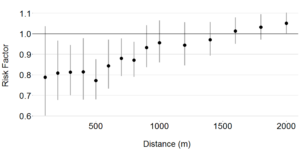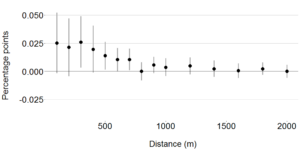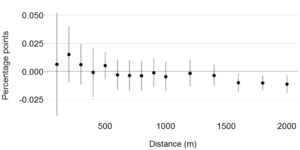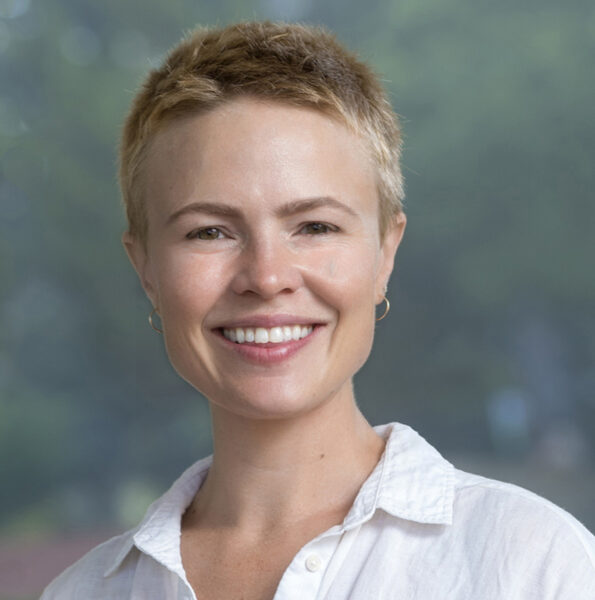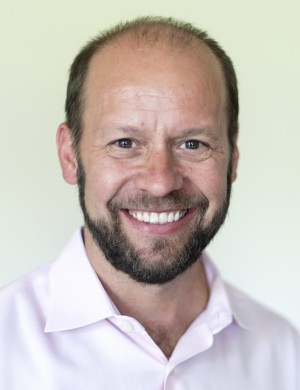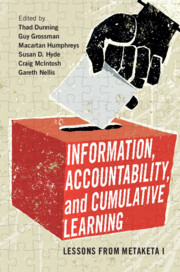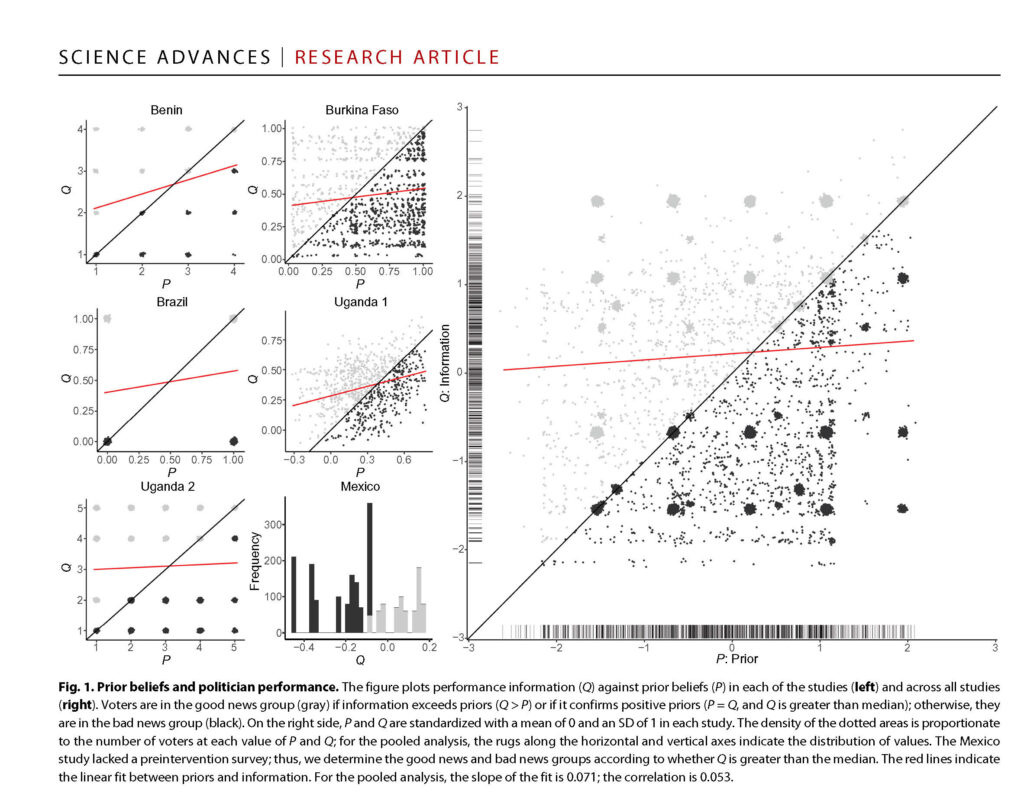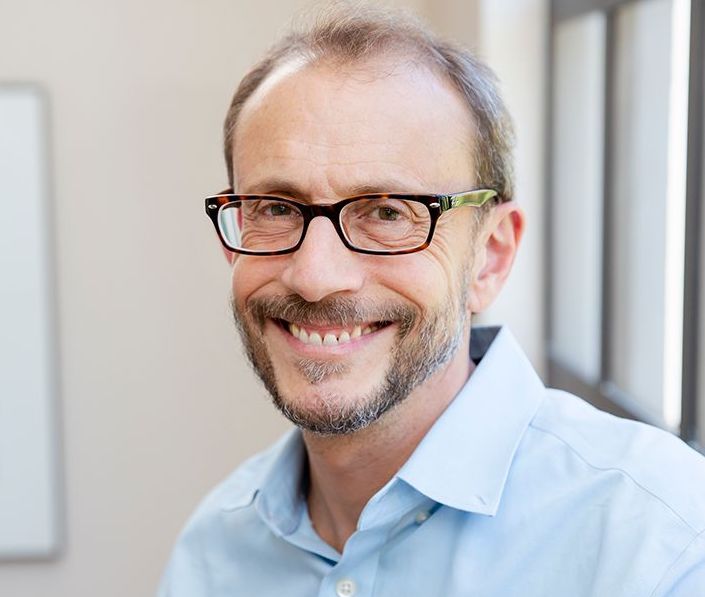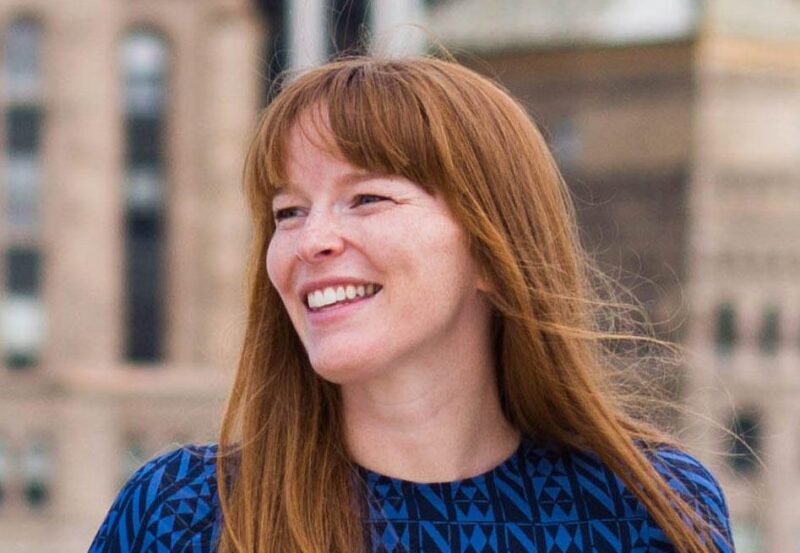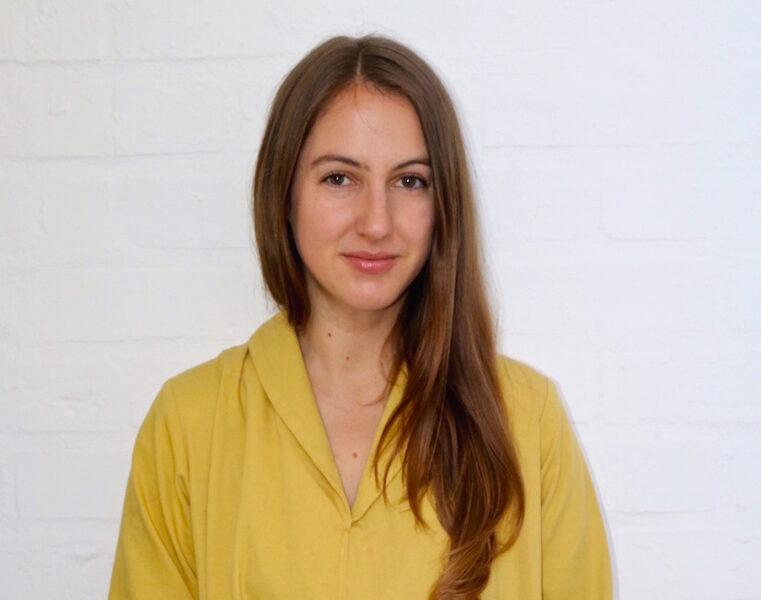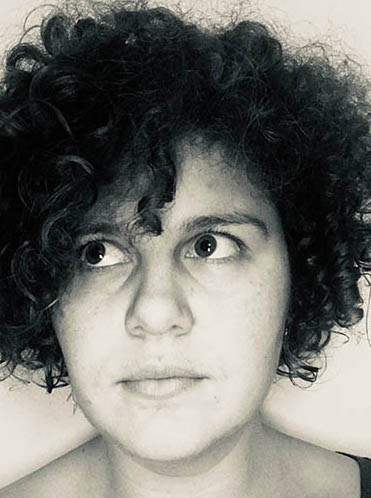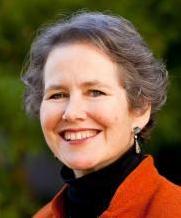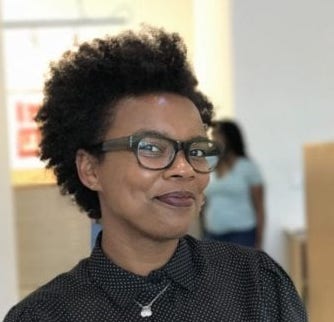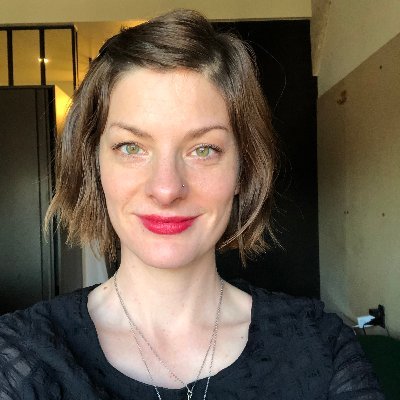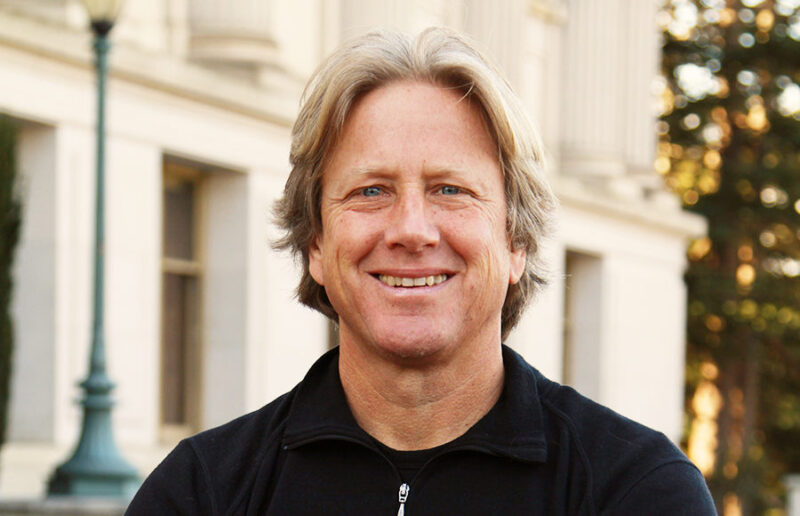In this episode of the Matrix Podcast, Michael Watts talks with Dacher Keltner, Professor of Psychology, Director of the Berkeley Social Interaction Laboratory, and Faculty Director of the Greater Good Science Center.
Dacher’s research focuses the biological and evolutionary origins of emotion, in particular prosocial states such as compassion, awe, love, and beauty, and power, social class, and inequality. He is the co-author of Born to Be Good: The Science of a Meaningful Life, The Compassionate Instinct: The Science of Human Goodness, and The Power Paradox: How We Gain and Lose Influence. Dacher has published over 200 scientific articles, written for many media outlets, and consulted for the Center for Constitutional Rights (to help end solitary confinement), Google, Facebook, the Sierra Club, and for Pixar’s Inside Out.
Related Materials
- Approaching awe, a moral, spiritual, and aesthetic emotion, co-authored with Jonathan Haidt, Cognition & Emotion, 18 August 2010.
- Higher social class predicts unethical behavior, co-authored with Paul K. Piff, Daniel M. Stancato, Stéphane Côté, and Rodolfo Mendoza-Denton, PNAS March 13, 2012
Listen above or on Apple Podcasts.
Podcast Transcript
Woman’s Voice: The Matrix Podcast is a production of Social Science Matrix, an interdisciplinary research center at the University of California, Berkeley. Your host is Professor Michael Watts.
Michael Watts: Hello and welcome to Matrix Podcast. We’re delighted today to have Professor Dacher Keltner from the Department of Psychology with us. Dacher is well known on and off campus for his work on emotions and social interaction, on power and social perception.
And I’m sure at least some of our listeners will be familiar a couple of his bestselling books– Born to be Good, The Science of a Meaningful Life, and The Compassionate Instinct. But also, more recently, The Power of Paradox, How We Gain and Lose Influence has been enormously influential, picked up by Wall Street Journal, New York Times, and so on. And he’s a major figure in the study and analysis of the relationship between the emotional and social psychological worlds and contemporary problems of today.
Dacher was born in Mexico, Jalisco. And his parents brought him to Laurel Canyon for a while. And then he was raised in the Sierra Nevada before going on to college in our wonderful UC system, Santa Barbara, before going in turn to Stanford, where he was awarded his PhD in social psychology. Dacher has been here since the mid-1990s. And we’re delighted to have him here today. Dacher, welcome to you.
Dacher Keltner: It’s great to be with you, Michael. I’ve been looking forward to this for a long time.
Watts: Good. Obviously, your work stretches over a number of domains. We can’t cover them all today, but I wanted to focus in particular on two or three subjects of your very recent research. And I want to begin, if I may, with your work on the relationship between emotions and nature, immersion and engagement with the natural world.
Keltner: Yeah.
Watts: This is, of course, a long-standing question, whether we go back to the romantic poets, or John Muir, or Walden Pond, and so on, community gardens. All of this is speaking to these sorts of issues. Let me start then with a sort of general question. What attracted to you, as a psychologist, a social psychologist, about the relationship between the emotional world and the experience of nature?
Keltner: Ah, what a terrific question. So part of it is my parents. I was raised by a mom who taught romanticism and Wordsworth and Shelley and Blake and Virginia Woolf later. And, obviously, as you’ve already alluded to, those poets and writers really prioritized nature as a source of deep wisdom, deep insight, moral insight, spiritual experience.
Watts: Absolutely.
Keltner: And then I was raised by a dad who was a painter who had me looking at paintings since I was a young kid and a backpacker. And he got me going out backpacking. And there, like a lot of people who are lucky enough to be near mountain ranges, I experienced what Ralph Waldo Emerson, who was influenced by romanticism, the idea that there’s nothing that nature cannot repair.
Watts: Right.
Keltner: And then there’s a kind of a political or social-political motivation here. I came into contact with Stacy Bare, who was a veteran. He came back from Iraq. He wanted to blow his brains out, like a lot of veterans.
Watts: Of course.
Keltner: You know, all kinds of troubles. And he went rock climbing, and it saved his life. And then he partnered with me, or I partnered with him, through the Sierra Club, thanks to John Muir, to get underserved teenagers and veterans outdoors.
Watts: So this sort of recuperative aspect of a connection in some way, whether it’s profound or indeed just in the everyday, can you talk a little bit about how you began to frame that as a research project?
Keltner: Yeah.
Watts: And I want to especially explore this notion of awe that you explore in detail as one particular set of emotional responses to the natural world.
Keltner: Wow, what a terrific question. So there’s amazing science in Japan and South Korea, in particular, where they have healing forests, where they literally use health care money to get people through these experiences in the forest. And what they’re finding published in Japanese and Korean is being outdoors calms your cardiovascular system. It helps your immune system. It helps your brain function. It helps your well-being.
My lab really got interested in nature vis-a-vis awe, right? And a lot of awe experiences worldwide are found in nature– mountains, flowers, spring, shadows, light, clouds, skies. And we had this initial finding, Michael, that really got a lot of attention– thanks to Jenny Stellar here at Berkeley– which is, the more I feel awe on a daily basis, the lower my inflammation. And the inflammation system is part of your immune system that attacks pathogens. But if it’s chronically activated, you’re vulnerable to diabetes, autoimmune disease.
Watts: Exactly.
Keltner: Awe quiets that down. And that blew my mind, right? And so putting these things together, we arrived at this idea that– from Romanticism and Wordsworth and Indigenous knowledge and others– that nature gives us awe. And when you read Muir, the flesh-and-bone tabernacle disappears, and you read Emerson.
Watts: Exactly. Exactly.
Keltner: It’s all awe.
Watts: Exactly. Exactly.
Keltner: So we started to look to nature as a pathway to awe and all of its benefits.
Watts: But from what you said, this seems to be exceptionally deep in the sense that you started with South Korea and Japan studies, that this is, in fact, something that is very profound– if you want to use the language of hardwiring– that it has cross-cultural valency. Is that your sense too, that this is not something that’s peculiar to us here in California?
Keltner: [LAUGHS] Right. And thank you for saying that because the first response is like, oh, this is just a California thing.
Watts: California thing.
Keltner: But this is universal. And we’ve got a lot of data on that. And I really like your word, Michael, deep, Indigenous knowledge. And there are now really sophisticated surveys of 10,000 years of wisdom. Humans are part of nature, and nature gives them all and gives them a sense of– I’m part of a big system.
And so we are, I think– and if you read Emerson, when he has this great spiritual experience in the gallery of comparative anatomy in Paris that really leads to his transcendentalism– and he freaks out. He’s like all of these species– and he’s seeing them in this museum– I’m part of them. And it’s almost a Darwinian insight, like we’re all one thing.
Watts: Exactly.
Keltner: I think it’s one of the deepest sources of our mind that there is. And a lot of people have written about this, but now science gets to take a crack.
Watts: So as a scientist, how then did you structure? I’d love you to talk through for our listeners the way in which you designed a project with very different constituencies. And of course, this recuperative capacity that you’re talking about is particularly relevant. We’re on a campus here for stress students, for example, to say nothing of veterans you were working with. So could you talk a little bit about how you framed or and the data, really, that you’ve been able to generate?
Keltner: Yeah. Thank you so much for asking the methodological question because awe really presented a lot of challenges scientifically. And in fact, there are people who feel like, how dare you even study it as a scientist. It’s ineffable, and it’s mysterious. I’m like, come on. So we had some early failures. Having students look at fractals in the lab didn’t do anything. And then we started to get the idea. And it was really Paul Piff, who’s a professor at UC Irvine, who took people outdoors and had them look at trees. And trees are incredible for one or two minutes. And they became more kind and civil and so forth. And that just spurred in me the idea that we can study all in nature.
And so what we did, in partnership with Stacy Barron, the Sierra Club, is– and it was hard work. It took us years. What we did is we literally got high school students, and we went to Oakland and Richmond where they don’t go camping. And they have not seen a full sky of stars. And we got veterans. And veteran suicide rates and depression rates are 2 to 3 times that of the average control person in the United States. And what we did, it was amazing. And Craig Anderson was really the point person. We tracked their emotions. We measured how well they’re doing before a rafting trip.
Watts: And the rafting trip was the vehicle, as it were, for a particular immersion into a very dramatic natural landscape.
Keltner: Yeah. And if you and I went on that rafting trip, we would go through rapids named things like the Meat Grinder. These are serious rapids.
Watts: Got it.
Keltner: So here’s what’s great. So we measure how they’re doing before. They go on this rafting trip that’s coordinated by the Sierra Club. GoPro gave us cameras. And so we mount them on the rafts.
Watts: Fantastic.
Keltner: We videotaped them. And if I showed you the videos so we can post them, people are going, whoa! Whoa! They’re screaming and howling and exalting. So that tells us this was the real thing.
Watts: Got it. So now, how did you convert that experience then into data that you could then analyze? Stick with the veterans for a moment.
Keltner: So we do a couple of things. First, we gather measures. At the start of the study, we gather saliva. And from saliva we can assess stress-related cortisol. Then during the rafting trip, we measure emotional expression. After the rafting trip and one week later, we measure how well they’re doing. And I think the key results are, number one, the Emerge, it’s full of awe. By the way, we also have them write about their experiences.
Watts: They keep a diary of some sort or a log.
Keltner: Yeah. In the tradition of Thoreau, write about nature. One of our veterans wrote, he — just looking up at the sky, which he hadn’t really thought about in a long time, gave him a sense of how small his trauma is in the big sweep of history and how much power he has in life.
Watts: Extraordinary.
Keltner: Yeah, I was just blown away.
Watts: Extraordinary.
Keltner: So those are our sources of data. And then the key findings are that everybody is less stressed a week later– teens and veterans. Veterans, 32% drop in PTSD.
Watts: Wow.
Keltner: And if you compare that to anything, it’s hard to move PTSD around. And the third thing that was cool, we have a lot of awe during the experience. And then their physiology, when we measure cortisol at the beginning of the trip and at the end, starts to resemble each other on the rafting trip. It’s almost like they’re become this collective entity, where they find strength. So nature’s powerful.
Watts: Now, another part of that study was exploring awe through, I think, what you call the “everyday set of experiences,” which are very different from the drama of the Meat Grinder, et cetera. So can you talk a little bit about both how you structured that and again, what emerged out of those sorts of experiences?
Keltner: Yeah. one of the challenges in the science of studying an emotion like awe is– and you put it really nicely, Michael. If our listeners start to think about awe, they’ll think about– I remember the time that I was in the Grand Canyon, or I was at this, I was at a temple, or I heard this Nobel Prize winner speak, or I met Bono. And that doesn’t address the question of like, what’s our everyday life of awe like?
So to do that, what we do is we rely on a methodology called the Daily Experience Sampling Approach. And we get people connected to our lab digitally. And every night for two weeks, they write about– did they feel awe that day? We’ve done this in China and Japan and the United States, a lot of different places, and that gives you a sense of, well, what’s the everyday landscape of awe like?
And what we found, first of all, 2.3 experiences of awe per week. And people are having incredibly subtle, powerful experiences of awe in ways we wouldn’t ordinarily think. Walking to school, they see leaves up in the light, and they have an interesting pattern on them, and they feel awe. Or a friend comes by and helps them out in a time of need, or hearing a piece of music.
So there’s a lot of everyday awe, and it has the same benefits as these Big Bang experiences. I get calmer. I see my stresses within perspective. I feel more connected to a community. So both everyday and big stuff, we got to go after.
Watts: That seems to be very important because there’s– that everyday experience because often, that seems to be– how can I put it? Relatively invisible, or not acknowledged, or we pass over it. Very different from that drama of being on the river, for example.
Keltner: Thank you for pointing that out. I think one of the challenges for our culture in thinking about awe is the scholarship has really focused on the spectacular versions– the Mystics, Julian of Norwich. Oh my god, I’m trembling with God.
Watts: Exactly.
Keltner: Psychedelics. Big experience.
Watts: Exactly.
Keltner: Experiences, listening to music, like Charles Darwin had. And what that study we just talked about said is– and philosophers and certain contemplative teachers, like in particular, the Buddhists feel like it’s everywhere. Just open your eyes, and you’re going to see a lot of moral beauty and character in people, and incredible nature. And that’s what we’re finding, is there’s awe that’s all out there to go after that– we need to really cultivate in our culture.
Watts: These findings, obviously, have huge implications for personal well-being. And I just want to close this part of our discussion by asking you about how you see this work gaining traction in some, almost programmatic sense. I know you’ve worked a lot in schools. You’ve worked with veterans. So how do you see the insights from your research? Is that we’re moving into arenas where people can actually both be aware of. One can get state or maybe private funding to, in some sense, instantiate some of this work.
Keltner: Thank you. I really see this awe spreading, and it already is in a couple of ways. One is, we have to open our eyes to what we’re already doing. So 300 million people go to our national parks each year. That’s more than baseball games, football games, all the Disney combined by a mile. It is the central institution in the United States. And they’re getting all benefits. And so we need to honor that.
The second thing, as you know, Michael, I’ve devoted part of my career to teaching the science of happiness and health, and really prioritizing how these happiness practices benefit your nervous system, like inflammation levels, like odors.
And we’ve gone through a mindfulness movement. There’s a gratitude movement, and I think awe is next. And let me give you one finding that really is about how to promote this, with my collaborator, Virginia Sturm, at UC San Francisco. There’s a Healthy Brain Initiative over there, which is looking at people after the age of 75, and that’s about when happiness starts to dip. And so what can we do to strengthen people. And we’re working through the results. Really robust. You go on a regular walk once a week or an awe walk. And I’ve written up a program for an awe walk at mindful.org. Lots of people have used it.
And it’s just go out, wonder at things, do unusual things. And the 75-year-olds who do the awe walk show less anxiety and depression, which starts to arrive when you’re 75 in some people, than the vigorous walk conditions. So I think there’s going to be a lot of nature programming and all programming that starts to happen.
Watts: But presumably that is as relevant for youngsters. Particularly, I know you’ve worked a lot with underserved communities, but that’s as true for marginalized communities in Los Angeles or New York. And particularly, in some sense, again, embedding that in school experience, where, again, the every day that you’re talking about, it’s not something that’s going to necessarily demands a trip to a rafting expedition.
Keltner: Absolutely. And I think that that’s all– to me, part of it is– how do we– the aging population in the United states, there’s a lot of complexity. Part of it is veterans.
Watts: Yeah, of course.
Keltner: And there’s a lot of good work and then underserved kids. Based on this work, just as one existence proof. There was a school teacher in the Bronx, and she’s profiled at the Greater Good Science Center, who took her kids out. These were kids who were having difficulty going to school. Very poor. And they went out on awe walk. And she does it regularly as a practice in her classroom and gets them to paint what they did, and write poetry about.
Watts: Absolutely.
Watts: Very powerful. So I think part of what’s happening, like at the Greater Good Science Center is, our practices are in thousands of schools. How do you breathe? How do you empathize? How do you express? How do you be civil? And I think awe will be part of that. And there’s a lot of work like the English are very good with their walking tradition.
Watts: Exactly.
Keltner: They have school kids do a lot of Awe Permit Program.
Watts: That’s exactly right.
Keltner: So it’s coming.
Watts: Fantastic. Fantastic. Let’s move, Dacher, to a second area, if I can, of your research, which I found absolutely fascinating. Kindly sent me an article with some colleagues from Stockholm and Washington, Saint Louis from the American Psychologist on vocalization. And again, given your long-standing interest in emotional states and the emotional world, the relationship between the two.
So again, let me just start with a general question. What is it, again, as a psychologist with this history of engagement, with the emotions and with patterns of social interaction that we were just talking about? What is it that drew you to vocalization and particular forms of vocalization that you discuss in this article?
Keltner: It’s so interesting. And I really trace this back to my parents, which is, my mom taught poetry and romanticism, and loved DH Lawrence. Like in our family life together, she would be quoting poems, William Blake sayings. And I could just hear all the depth of meaning and emotional meaning in the voice. And then my dad had me looking at paintings– Dutch masters and Goya and all of his favorites.
And as a kid, I was just transfixed with emotional expression in art. And then just to give– I was sitting at a conference one day talking about an experience of awe. And this guy who now is well-known, but he was an iconoclast at the time, Paul Ekman, got up. Controversial guy. Brilliant scientist. And he had spent seven years figuring out how to study emotion in the face by looking at facial muscle movements.
Watts: Exactly.
Keltner: And at the time, he hadn’t published anything, or not too much. And he said, we have a new method that can help us measure emotion in the face anywhere in the world. And there are new methods for measuring emotion in the voice. And I literally almost started crying because here was a way to measure the face and then the voice in emotion anywhere. And that is what my parents had taught me to look through at the world for.
And that led to what you’ve pointed to, which is 25 years, 30 years of my career, trying to figure out how do we express emotion in the face and the body, and in the voice.
Watts: Absolutely. Now, one of the things that I found absolutely extraordinary in this piece is that you focus, in particular, on what you call vocal bursts. And so I’d like to, for our listeners, just to have you walk through that, and particularly, as you do in the paper, to illustrate a little bit–
Keltner: I will.
Watts: –the extraordinary menu of these vocal bursts.
Keltner: Yeah. So there are two ways in which we communicate emotion, at least, in the voice, as scientists study them. One is with prosody, the tone that we give to our words.
Watts: Exactly.
Keltner: And the other is to these short sounds. They last about a quarter of a second. That don’t have words or semantic content in them, but they have tons of emotional meaning. And they’re called vocal bursts. So I’m going to first illustrate. And then I’ll illustrate a few. And I’ll tell you why I got really interested in these. So here’s one that I used to hear from my teenage daughters, who are now, I’m very proud to say, students at UC Berkeley.
Watts: Congratulations.
Keltner: Thank you. We don’t get any advantage. So it’s a big deal for us. And they are 13, 14. And I put on my music or talk about what I believed in. Here was a sound that I would hear. [LIP TRILLING] And immediately, it was like, oh, they’re expressing social disgust or disdain.
Watts: Disdain.
Keltner: Yeah, exactly. So here just to illustrate, can I test you?
Watts: Yes, of course.
Keltner: OK. How would you express interest in somebody who’s speaking?
Watts: Interest in someone who’s– if it were a dramatic lecture, I might say, whoa!
Keltner: Nice. That’s almost awe, right? Like this awe.
Watts: Exactly.
Keltner: All right, how about somebody comes to you and their mom has dementia, and is really declining, and you’re going to show sympathy?
Watts: [SIGHS]
Yeah. Sort of a sigh. How about you’re really frustrated with the parking ticket you just got in Berkeley? What sound would you make?
Watts: [GROANS]
Keltner: [LAUGHS]
That’s pretty strong. So we have this incredible repertoire of these sounds. So sympathy is on. Anger is [GROWLS] It’s like awes. Whoa. Now, here’s what’s really interesting about them. Number one, if you look at what the acoustics of these sounds are, the particular patterns of acoustic sound waves that they use, they actually predate language.
And they are old in the evolution of how we communicate. And a lot of mammals have a repertoire of about five different emotions that they signal through these kind of vocal bursts. And so what we did, in short, is we in Berkeley, we gave people little scenarios like, imagine that you stubbed your toe. What sound would you make?
[GROANS]
Or someone’s really crying and suffering. What sound would you make?
Oh.
So we take those sounds, and we then go to different parts of the world, 11 different cultures, including a remote tribe or community in Eastern Bhutan. We play the sounds, and then we have them match the sound to different situations. And what we find is humans can identify 18 to 20 sound emotions via these little short sounds.
Watts: Extraordinary. It’s extraordinary. Again, can I come back to the research design part of this? I also found this absolutely fascinating. You also began to use, essentially, video clips and other sorts of material as a way of assessing this fantastic range of emotional states. One thing that I found particularly interesting is that, for example, one of these utterances, these vocal bursts I gave you, I said, whoa.
For example, I can obviously use that for a variety of emotional– that whoa sound can be whoa. Whoa! So I’d love you to talk a little bit about how, in some sense, that– again, coming back to the data that you were able to document this extraordinary range of emotional responses through these.
Keltner: Thank you. Yeah. I mean, Michael, this is some of the work that I’m most excited by, and it’s of Alan Cowen, who is a brilliant, young mind, studied Applied Math at Yale and came to Berkeley. The study that I’ve just described to you is typical in this tradition. One sound, you know, you make it. And then you give it to other people. They judge what its meaning is. And that really doesn’t capture what you just pointed out, which is the extraordinary complexity of this space. You went, whoa. You did two different whoas. Whoa! versus whoa. And one is more inspiring, and another is a little bit more astonished or dumbfounded.
Watts: Exactly. Or just surprised. Exactly.
Keltner: So what Alan did– and I would really encourage our listeners to go to his maps just to explore– is he gathered, as you said, in one study of the voice, and this builds on studies of experience and face and music. He did exactly what you suggested, which is go out and get a broad array of sounds that you would hear in the real world. In this particular study, I think there were 2,100 of people making all kinds of different sounds.
Watts: Exactly.
Keltner: And then you present those to other people. You give them a richer way to rate them. And then with new mathematical techniques that he really had to prove statistically and data visualization techniques, he creates these maps of the meaning of sound.
Watts: Now, is this what you refer to in your article as the semantic space?
Keltner: Exactly.
Watts: I wonder if you could just talk a little bit about that and what populates it, because I found that incredibly interesting.
Keltner: Thank you. I actually think what he– and it’s largely Alan. I think he’s discovered a new way to represent meaning that– so a semantic space is the idea that any realm of experience, how much do I different kinds of art? What music do I like? And what emotions does music communicate? What emotions do I communicate with a voice? How do I think about different kinds of people? Those are meaning spaces, semantic spaces of different domains.
And they have thousands of stimuli within them, not just 10 or 12, like I used to study. So they have three different qualities that you really should think about. One is called the dimensionality, which is, how many distinct units of meaning are there? How many kinds of emotion do I perceive in the voice? The second is the distribution of the stimuli. Are they in these discrete nodes? Or are they blurry and blended? And your example suggests they’re–
Watts: There’s a gradient of some sort.
Keltner: Right, there’s a gradient. You can go from whoa! to whoa. Different sounds, close meanings, but quite graded. And the third is– our audience, I hope, will forgive the clunky language is conceptualization, which is when I hear music, I see art, I taste things, I hear a human voice. Do I immediately categorize it with labels like awe?
Do I construct it through? Oh, that’s a good thing. And then add an interpretation. It’s an issue in the field of emotion.
And what Alan’s found, just to round out this story, is, wow, these spaces are complicated. In terms of dimensionality, there are a lot of emotions we perceive. To your observation, they are graded. They aren’t discrete boundaries between categories. They’re blended. You can express on surprise or on horror as blends. And third, it really looks like the mind first categorizes emotion in terms of what we call discrete labels. Like, oh, that’s really about sadness, and then interpret it. So his work, we’ve just published a paper on music, on prosody, on face. We’re working on art. I think semantic spaces are profound.
Watts: That seems to open up. I mean, to blow up, in a way, certain conventional understandings of how we think about emotion, how we think about forms of vocalization. This seems to open up whole new avenues.
Keltner: Oh, my God. I have to tell you, Michael, one of the great things about working at Berkeley, just being a professor or being in life, is young people open up your eyes to new ways of looking at the world. And Alan came in. And he’s like, the whole field of emotion– and you’ve already pointed this out– was based on this idea of one-to-one matching. Oh, there’s a face. I use one word for it.
Watts: Exactly.
Keltner: And then the word I use always goes to that phase–
Watts: With this stable meaning.
Keltner: And it’s not like that. Faces can have many meanings. Words can refer to different– but there’s a structure there that he’s really uncovering.
Watts: It’s fantastic. And incidentally, we’ll have the links, Dacher, for our audience on our website. So if people want to pursue and get into the nitty gritty and granularity of what you do, we can.
Let me turn to the third and final issue I’d love to talk about today, which is far too complicated and rich for a discussion like this. We’ll have you back to talk about it further, but it’s so relevant.
And that is, again, your work as a social psychologist on the relationships between emotion, social interaction, and social class. Now, obviously, on a campus like this, for example, we have all manner of social scientists, many of whom are associated with Matrix here, who think about social class in terms of the particular forms of American capitalism that have emerged since the ’80s, or the centrality of race and institutional racism, et cetera.
All sorts of hugely important ways of thinking about how social class in the United States has changed, whether we actually have an oligarchy, an elite. Who are they, et cetera? The centrality of the blue-collar, white working class.
You come at this in your work as a social psychologist. So again, let me pose the question. What is it, given your formation, that in some sense– I can understand why you would come to social class. For our listenership, what is it that how you frame the social class issue that would be complementary to but very different from what a political economist like myself might approach the issue?
Keltner: Yeah, it’s funny. Michael, I just want to start with the personal in a sense. I had this really interesting experience in childhood where– and very few kids would have this experience today, which is my mom got her PhD at UCLA. We were living in– it was 1970. It was actually a period of egalitarianism in the United states, as you know. Income disparity wasn’t great. Lots of public schools.
And my parents, for personal reasons, we went from a very nice upper middle class neighborhood in Laurel Canyon, LA, and we moved to a really poor town. And I was 10 years old. And the neighbors were sublimely nice. It was a bucolic life. We had five acres and a pond. It was wonderful. But I just noticed, like, wow, when you go to a poor place, things just start happening.
Kids get sick. They have issues at school. There wasn’t the warm surround of a nice middle class neighborhood to move them along. And it really struck me. And over my life as a social psychologist, I’d be learning about social psychology. And I kept thinking about class. Thanks to this personal experience. Bill Emhoff’s book was on the ruling elite.
Watts: Exactly.
Keltner: Blew my mind. Whoa, there are all these institutions that are really about class, like the social register. Pierre Bourdieu changed my life. It’s like, whoa. class imbues art and what I like.
Watts: And taste, and so on.
Keltner: And taste. It just astonished me that taste, a psychological phenomenon, could be shaped by institutions. And as you nicely set it up, that’s the challenge of our work, is to say, how is it that the school you go to and the neighborhood you grow up in, and the parks they have, and the after-school programs, and the money in your parent’s bank account class, prestige of work, how does that get into your nervous system? And that was the central challenge that my field hadn’t addressed that I was impelled by.
Watts: And of course, I mean, just to follow on from that, I mean, it’s also true. You were talking about your own personal experience. But it’s also the case that, in general– I’m English– where a class system is so front and central, even today, certainly. But certainly when I was growing up in the ’50s and ’60.s And yet in some sense, the very way that the category of social class in the United States, in some sense, is something that often doesn’t get talked about.
Keltner: At all.
Watts: Or rather we’re all middle class. All classes get dumped into the enormous bucket of middle-classness. So in some sense, then, approaching this as a psychologist, it seems to me is, again, doubly unusual for that reason, too.
Keltner: It is. And thank you for pointing out because– another interesting experience for me was when I was 16 or 15, my mom did exchange program, and we were in Nottingham, England in 1978. And they sent us to this super-working-class school. And it was just mayhem and wonderful. And all the kids, I remember them telling me– and it just opened my eyes– they could identify a person’s class background– and there were six or seven types– by their tone of voice.
Watts: Exactly.
Keltner: And it blew my mind.
Watts: Exactly.
Keltner: You mean, you can tell me where a woman lives based on how she elongates vowels?
Watts: Precisely. Exactly.
Keltner: And they had this whole class theory.
Watts: Exactly.
Keltner: In the United states, we think everybody class is hidden. We think everyone’s in the middle class and their data on that. And to me, that was a mystery to go after.
Watts: Absolutely. Let me just give perhaps listeners a sense of at least one of the ways that you’re thinking about this issue. I’m just going to read the very provocative title of a fantastic piece published, interestingly, in the proceedings of the National Academy of Sciences, and it’s entitled “Higher Social Class Predicts Increased Unethical Behavior.”
We can develop this, but I wonder if we could just start there, again, to open up how you, again, as a social psychologist, take, in this case, what you’re calling higher social classes and how you begin to think about the relationship between that social class with all of its status, resources, assets, entitlements, and behavior, and forms of social interaction.
Keltner: That paper was one of the most downloaded papers I’ve ever—
Watts: I can imagine. I can imagine. I can imagine.
Keltner: I got a lot of hate mail.
Watts: I bet you did.
Keltner: Yeah.
Watts: I bet you did.
Keltner: Part of the motivation was prior to social class. And by class, we think about it in two ways– wealth, prestige of your work, and education. And then subjective, which is if I’m in a neighborhood and there’s a 10-rung ladder of social class, where do I fall? And you put a little x. And both work equivalently, although they’re different.
We had been working on power, the sense of having influence over others, and there’s a lot of data that showed that power unleashes unethical tendencies– you interrupt people, you take resources, et cetera.
And so we had that as a grounding. And my colleagues, Paul Piff, in particular, in this case, and I, were struck by not only that literature, but really interesting findings and just real-world observations– interesting findings like this one, which really shook us. Who’s more likely to shoplift, an upper middle class high school kid or really poor kid? Upper middle class. They’re more likely to shoplift.
So we started to get the sense. And a lot of people have this intuition that power and class and privilege and feeling better than others frees you from the constraints of social norms. And then like a lot of social scientists, Michael, we’re – you look at the US today of admission, cheating, scandals, and the way executives compensate themselves. And who has sexual affairs at work. It’s more likely to be high-level executives on down the line.
And we were like, wow, there’s something about privilege that that’s bad news.
Watts: I mean, of course, this is central both to MeToo. It’s central to Black Lives Matter. I mean, embedded in these sorts of movements is exactly the ways in which social class and class power operates at a number of different registers.
Keltner: And that’s why. It’s not random that once this work, hit the press, which we should talk about. The MeToo movement reached out to me and. It was like, hey, let’s talk about sexual harassment because this guy grabbing my butt in the Xerox room is a class move.
Watts: Absolutely. So can we just– again, because this is obviously– you got a lot of heat on this, but I’m particularly interested in the science of it. Because how you establish these claims is enormously important. And you have a variety of ways in this paper. The higher social class predicts unethical behavior. I’d love you just to walk out again our listenership through the way in which– the multiple ways in which you empirically attempted to address that.
Keltner: Yeah. And that was so important for the field. So we look at correlational data. If I say I’m an 8 on a 10-rung ladder or I report my family’s wealth and education and prestige of work, and I more likely to endorse unethical tendencies? And that turns out to be true. Like, hey, it’s OK to take resources from the office, to not abide by the certain laws or conventions. We had ways in which we could momentarily get people to think they were in a position of privilege.
And this was developed by Michael Kraus’s. We have people rate themselves on a 10-rung class ladder. But we change the anchor. How are you on a 10-rung ladder compared to a homeless person? And suddenly in your mind, you’re saying, wow, I’m actually doing pretty well. I’ll give myself a seven. By contrast, if you say, what is your ranking compared to Oprah Winfrey, or a billionaire? Oh, my God, I’m down at a four.
Watts: Or a two.
Keltner: Yeah, you move people around. And that’s simple class mindset where I feel like I’m better and higher– one of my favorite studies in that package, and it’s really Paul Pitts’ genius at UC Irvine, is we have people– you’re playing in a game. You get to win 50 bucks. You roll the dice six times, or you press a little button that rolls the dice. And we know that they’ve scored. And the higher the score, the better your chances of winning the 50 bucks. Who cheats? Who lies?
Watts: Exactly.
Keltner: It’s people who are of an upper class mindset. Now, just think about it. They don’t need the 50 bucks.
Watts: Of course. Of course.
Keltner: But they’re more really– so that’s a nice experiment. And then the coup de grace or the icing on the cake was our car study.
Watts: This is fascinating. Could you just walk us through that? It’s so interesting.
Keltner: Yeah. And this boy, I have to tell you, when I present this– and I can almost predict, as I present these results, who’s driving a fancy car, who doesn’t.
So here’s what we did. How you behave on the road is really important. A lot of people die in accidents, billions of dollars. This is a serious thing. And people, their blood pressure boils.
So here’s what we did. I’ll talk about one. We did two different studies. It’s been replicated. Pedestrian zones in California, by the rule of law in the California Vehicle Code, it’s a series of white stripes. And if you’re a pedestrian about ready to cross, the car has to stop. Has to stop. Correct. People get killed in the Bay Area when cars don’t pay attention.
So all we did is we positioned a Berkeley undergrad at the edge of the pedestrian zone, and they look like they’re wanting to walk across. And we had another Berkeley undergrad hiding, noting the car that was coming. And we made sure that it was just one car, and not a big mob of cars approaching. And we coded: is it a kind of a poor Blue Book car, old AMC Pacer? Is it a moderate car, a Taurus? Is it a middle class car, a Civic, a fancier car, an Accord, or a really fancy car, BMW or Mercedes?
And if you’re driving a poor car, you stop 100% of the time. You honor the rules of the road. If you’re driving a fancy car, you blaze through the pedestrian zone about 42% of the time. I mean, that’s a massive effect. We replicated that study.
One of my two favorite moments, I was on a radio show about this in Florida. And this police officer calls in. And he says, I don’t ordinarily agree with people from Berkeley, but I have to say, when I stopped drivers of poor cars for violations, they are polite and civil. When I stopped drivers of fancy cars, they lecture me about my job.
Watts: Of course. Exactly.
Keltner: And I was like, there you go. There you have it. The other one is comedic, which is– I think Conan O’Brien told this story. Somebody asked me like, what about Priuses? Priuses actually are the most likely to violate the rules of the road, which is interesting in its own right. And Conan O’Brien told this joke where he’s like, hey, do you hear about this study from Berkeley? Prius drivers drive like mean people. It’s hard to drive well when you’re patting yourself on the back. But it really touched a nerve of just how uncivil privilege and feeling better can make you.
Watts: Now, obviously, and you discuss this in other work, is that let’s just call it that type of class entitlement. It permits you in some sense and perhaps justifies to yourself the ability to do unethical, immoral things. But that entitlement can be expressed– this is the question I want to get to– non-verbally through body posture, through all manner or through an ideology. You talk a lot about this, the ideology of merit. Well, we have a meritocratic system– you work hard, you take the exam, you take the SAT. I wonder if you could talk a little bit about the social psychology of those domains above and beyond the behavior, in this case, of simply not stopping at a stop sign or a crosswalk.
Keltner: Yeah. And that first wave of studies, cheating in a gambling game and taking candy in a candy bowl that was meant for kids, and driving, they’re fun theatrical demonstrations. But I think they really have parable-like qualities for people. Yeah, I’ve definitely had that experience with a driver. I feel, in some sense, the deeper question is, as you’re saying, Michael, it’s like what Erving Goffman was interested in, of like, everyday, social reality, what happens?
And the first thing is, entitlement breeds disrespect and incivility. And there are incredible studies of two out of three acts. As we started to publish this stuff, other people started to send us findings from around the world. Here’s a couple of my favorites. Two out of three acts of incivility in the workplace are from the well-to-do, high-paid managers. They’re calling people’s work dog shit. They’re offending people.
There was just a lot of swearing behavior, offensive behavior towards others. Insults at work tend to be perpetuated by people who are entitled. And then we started to document that in our lab. You could take two people, put them into a conversation. One person has more privilege or wealth, and they just show this kind of cool, detached, aloof disengagement. And that really spoke volumes to me. Just like, hey, just talk about your college students. Just talk about the day.
Watts: Exactly.
Keltner: This is the stuff of life. And the well-to-do, entitled person is not looking, not being warm, moving away, creating this cool atmosphere. I think that’s really profound, in some sense, to worry about. And then, thank you for bringing up the ideology work. One of the major trends in social psychology is like, how do we grapple with inequality? How do we grapple with– I mean, it’s astounding, people making $20 million versus-
Watts: Exactly. Exactly.
Keltner: And social psychology, I think, has a lot to say, which is we justify. We come up with these stories. And we’ve got a lot of neat new goods on this. People of upper-class backgrounds, number one, don’t see inequality. You can present them an image of ordinary people off the streets that shows a lot of inequality– really poor, homeless people. Very well-to-do executives, they don’t see it as being unequal. They just don’t see this issue.
And then in the ideology work, what we found is– you hear this in well-to-do, elite circles. It’s almost Social Darwinism. People start talking about better genes, special brains, which there’s no data that lends any credence to that thinking.
And what we found is, well-to-do people, when you present them with social problems like homelessness, when you present them with stories of success, they really invoke these social Darwinist, essentialist explanations. He’s born to be a leader. She has better genes. She has a brain that’s fit for success, et cetera. Poorer people are good sociologists, which you would love, which is, they think in terms of institutions.
Watts: Exactly. Exactly.
Keltner: Well, my school system doesn’t have a graduation.
Watts: I’m on the back foot from the get-go.
Keltner: Exactly. Exactly.
And again, to your point, sociologists knew this with depth, but to show like, hey, ordinary citizens walking around have these ideologies.
Watts: But presumably, also, what psychology does is to say that this has sort of psychic consequences.
Keltner: Oh my god.
Watts: This is internalized. It’s not just that– I mean, not seeing something, not seeing inequality or legitimating one’s own wealth or unethical behavior by virtue of a meritocratic ideology. All of that gets, in some sense, imbibed. It’s not just behavioral. It’s cognitive. It’s intellectual. It’s emotional. And presumably, this is also a central part of these sorts of studies, and you’re engaged with.
Keltner: And this is where psychology starts to inform sociology. And we were humbled to enter into the class literature where sociology and political science and a little bit of history are just so deep. But in this particular case, it does, which is the class-drenched ideology in a person’s mind suddenly creates institutions. And so you have an admissions committee–
Watts: Exactly. Exactly. Exactly.
Keltner: –of people of a class background.
Watts: Exactly.
Keltner: And then they write the letters to college students about what– or high school students about what they’re looking for. And if you’re poor and you read that language and it talks about special type of kid, it feels foreign.
Watts: Well, this is also, of course, a central on campus, as well as I do, that first-generation working class Hispanic students, with a mindset, a particular set of beliefs who’ve made it here, now have to navigate a complicated campus world of entitlement. I mean, this is something that–
Keltner: It’s profound. You and I have the privilege of teaching at a big public school. And like a lot of the UCs, we have a lot of poor kids, first generation. And this is one of the central issues they’re navigating. And it’s full of conflict. “Wow, I was raised in this wonderful family in the Central Valley in California. My parents didn’t go to high school, but it was warm and loving. And now I got all this class stuff I got to negotiate.”
Watts: Exactly.
Keltner: It’s hard. It is so hard.
Watts: Absolutely. We could go on forever on this. But let me ask you one last question again.
Keltner: Yeah. Thank you, Michael.
Watts: Again, it speaks to your work, your programmatic work. I know you’ve worked a lot on these issues in schools, where we increasingly now have a big divide between public and private schools, for example, but where these issues are almost inevitably hardwired into big, complicated, contradictory institutions at a totally formative moment of young people’s lives. So I wonder if you could talk a little bit about the types of work that you’ve been doing. I know you get all sorts of invitations to speak in schools.
Keltner: Yeah. I mean, I am deeply worried by what you nicely described, Andrew Hacker’s stuff. There are two societies now.
Watts: Yes, exactly.
Keltner: And like, whoa, there’s this private, elite, wealthy world. Let’s call it a wealthy world. And then there’s the public institutions. And to me, I have a lot of hope, because what we’re learning– one of the central things we’re learning about class is, if you feel stigmatized about your class and you hear somebody dumping on poor people, like a lot of people love to do, whatever it is.
Watts: Yeah, exactly.
Keltner: If you’re of a lower-class background, like the kids I grew up around– which is why I bring them up– you get stressed, your heart races, your skin gets sweaty, you have cortisol, and that interferes with how well you do in school. So if I’m feeling like my lower-class culture is stigmatized and marginalized and disenfranchised, I start to get stressed out. And what we are committed to at the Greater Good Science Center is ways to teach teachers with neuroscience and social sciences a backing like, here’s how you can keep kids calm.
Watts: Right, exactly.
Keltner: Teach them a little breathing. Teach them to practice gratitude. Teach them about the vagus nerve, which I study. And this kind of work through our work and other institutions, it’s in thousands of schools. And showing kids who– third graders who can calm down with these techniques do better in school. And so I think one of the ways to confront the inequality that’s entrenched in classism is to teach students tools to be stronger than that. And I’m really encouraged by where that’s going.
Watts: Dacher, that’s a fantastic way to end our wonderful conversation. There’s so much that we haven’t covered that I want to cover. I’ll make sure that we invite you back.
Keltner: It’d be an honor.
Watts: But meanwhile, we’ll have links to all of your work on our website, and including the Greater Good Science Center, so people that are interested in following up on this certainly can. And let me once again just extend my gratitude to you for coming along for a quite wonderful conversation. Thank you.
Keltner: Well, it was an incredible delight to be here, Michael. Thanks for your amazing questions. Thank you.
Watts: Thank you.
Woman’s Voice: Thank you for listening. To learn more about Social Science Matrix, please visit matrix.berkeley.edu.
